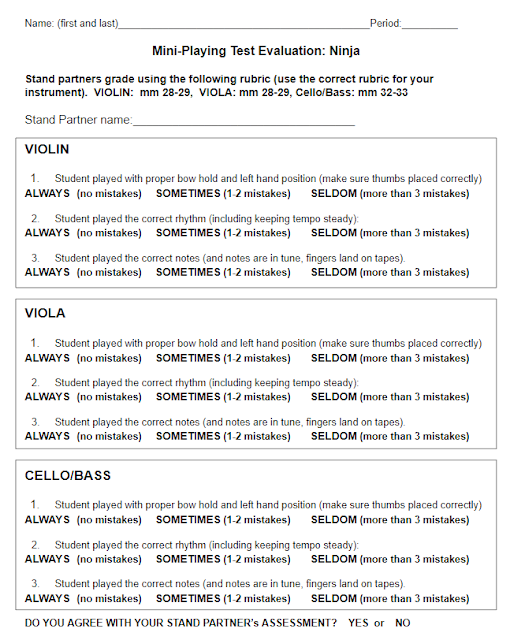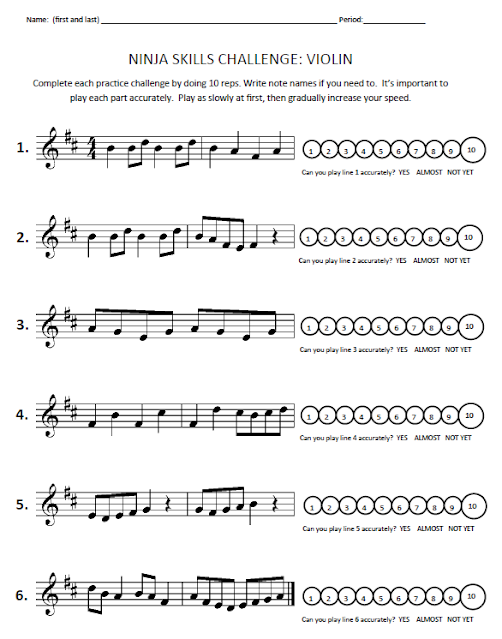What I do instead...
1. Self Assessments
I want my students to be able to self-reflect on their own playing. In order in improve, students must be aware of what/how they are playing in order to decide what to fix or change. Frequent self-assessments promotes student ownership and accountability. They know what is expected and where they stand. Self-assessments are quick and take very little class time.
Sample:
2. Peer Assessments
Instead of using an entire rehearsal for playing tests, I have students grade each other using very specific rubrics. We practice using the rubric as a class by having students grade me. Students listen to each other and circle the scores on the rubric. I love doing peer assessments because they don't take very much time. Stand partners actually talk to each other and help each other and I believe it creates a team dynamic. It helps students realize all are students need to master the skills for our group to succeed. At the end of the rubric, I ask a few questions: 1. Do you agree with your stand partner's assessment of your playing? 2. What did you do well? 3. What do you need to work on? Do you need help?
Sample:
3. Guided Practice
When I want students to master a specific challenging passage in our music, I create guided practice sheets. During class, students spend 15-20 minutes going through the practice sheet. By the end, students have drastically improved. After one guided practice assignment, one of my students said, "This is witchcraft! You should make these sheets more often. I'm so much better at playing that part now!"
Samples:

.png)
.png)















.png)








